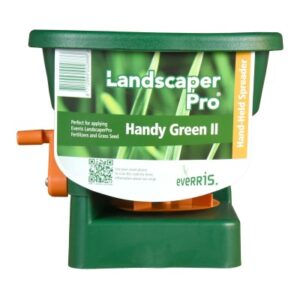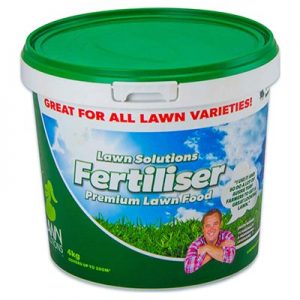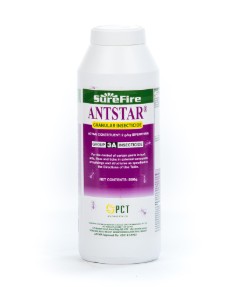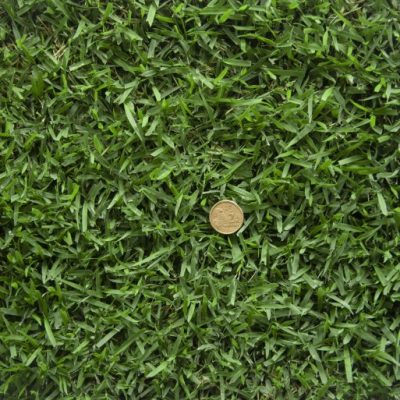

Spring… everything starts growing and greening up as the cold weather is replaced with lovely warm days. It is a great time to restore your lawn to its peak condition after taking a beating from the harsh winter elements.
Fertilise
Spring is an important time to fertilise, as your lawn breaks the winter dormancy. Once the warmer weather really kicks in, you can feed your lawn with a good granular NPK fertiliser such as the Lawn Solutions Fertiliser. Your fertiliser application will assist the lawn to jump into growth as the weather warms up. Fertilising will help to feed your lawn by giving it the essential nutrients it requires. Your lawn needs a perfect blend of primary nutrients such as Nitrogen, Phosphorous and Potassium to assist with necessary functions such as photosynthesis, root growth and overall vigour, combined with secondary nutrients and micro-nutrients such as Calcium and Iron for general plant health. Our Lawn Solutions Fertiliser, contains will continue to feed your lawn for up to 10 weeks! Available in a 4kg and 10kg bucket, they are a great addition to our fertiliser and lawn care range. So jump online and order yours today!
Once the warmer weather really kicks in, you can feed your lawn with a good granular NPK fertiliser such as the Sir Walter Fertiliser containing a perfect blend of primary nutrients such as Nitrogen, Phosphorous and Potassium plus micronutrients like Iron, it will work to feed your lawn and enable it to carry out all of the necessary functions needed for optimum growth, strength and performance.
Watering
Spring is a good time to get your watering regime in order to drought-proof your lawn too. A deep soaking once a week will train your root system to grow deeper into the soil, so when those 40 degree scorchers come along, your lawn will be prepared to take them head-on!
Top Dressing and soil pH
In order to have the best lawn, you need to have the best soil. Depending where you live, and the soil you have will play a very big part here. There is no quick fix for all soil types, so you’ll need to apply a treatment which is specific to the profile. If you have a clay base, then despite having put in new soil when you laid your lawn, the underlying clay will, over time, work its way up through the soil profile and into the topsoil through a process called bioturbation. Therefore, you’ll need to periodically aerate and apply a clay breaker such as gypsum, otherwise your soil will compact and lack the oxygen the roots of your lawn require for respiration.
If, on the other hand, your soil is quite sandy, then you’ll need to ensure that your soil has the ability to hold onto moisture. This can be corrected with regular applications of a soil wetting agent such as Lawn Lovers Lawn Soaker, which works to coat the sand grains and enables them to cling to moisture and nutrients.
Checking your soil pH is important regardless of your soil type, so be sure to test your soil with a basic soil pH testing kit or soil probe, the optimum level is 6.5. If your pH is higher you can use Sulphate of Ammonia to lower it. If it’s lower, a 50:50 mix of lime and dolomite lime will help to raise it, whilst adding Calcium and Magnesium which are often leached from acidic soils.
Your soil is full of nitrogen-fixing bacteria such as mycorrhiza and rhizobia, and these guys work hard to turn the nitrogen from the atmosphere and fertilisers into a usable form of nitrate for your lawn. During winter these guys go on strike, however once the soil temperature rises, they are ready to get to work. There’s nothing they love more than a boost of carbohydrate, so apply a soil conditioner which contains seaweed extract, and these guys will repay you ten-fold! Products such as Lawn Lovers Lawn Rescue or Seasol will do the trick.










 Australia's largest network of turf specialists
Australia's largest network of turf specialists